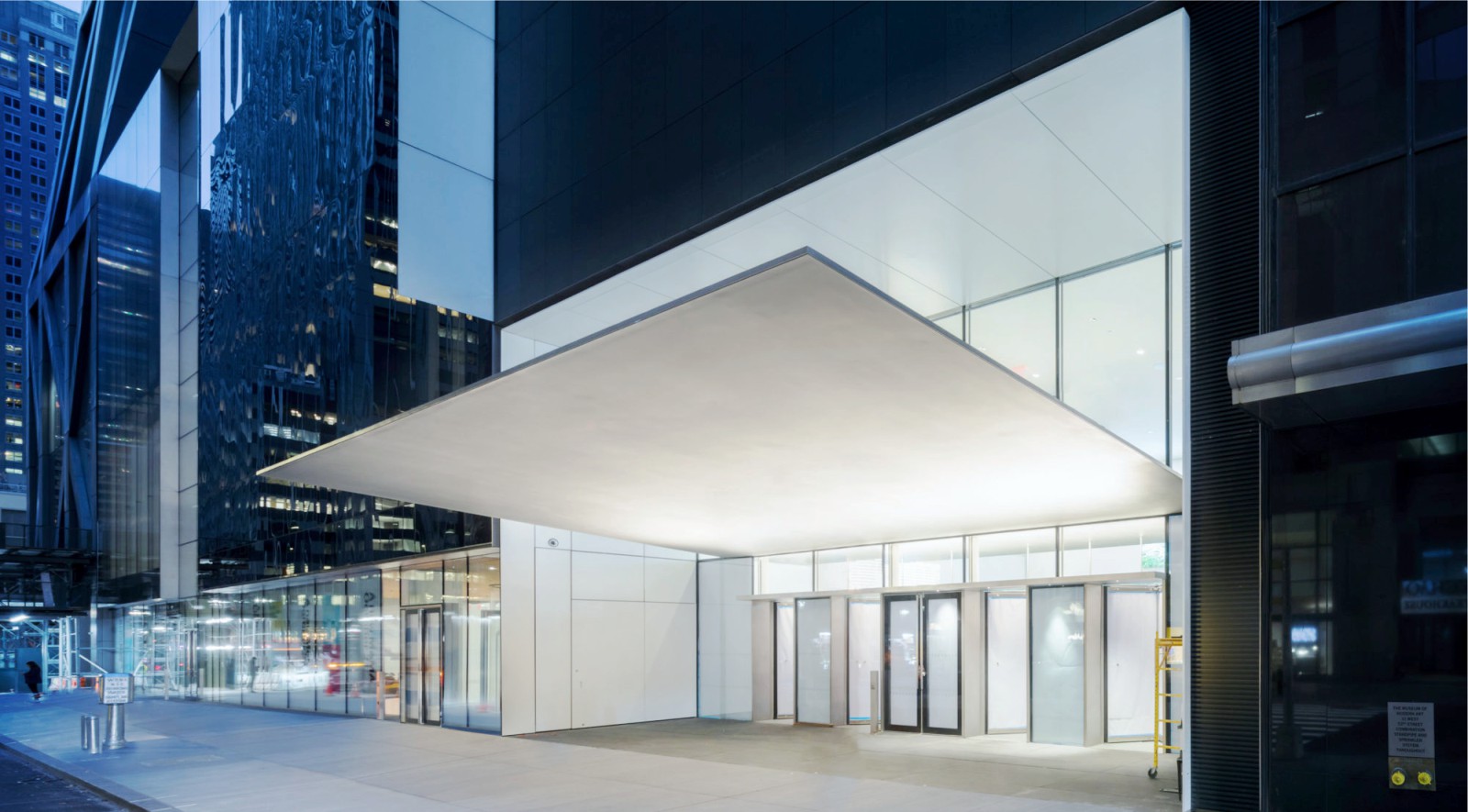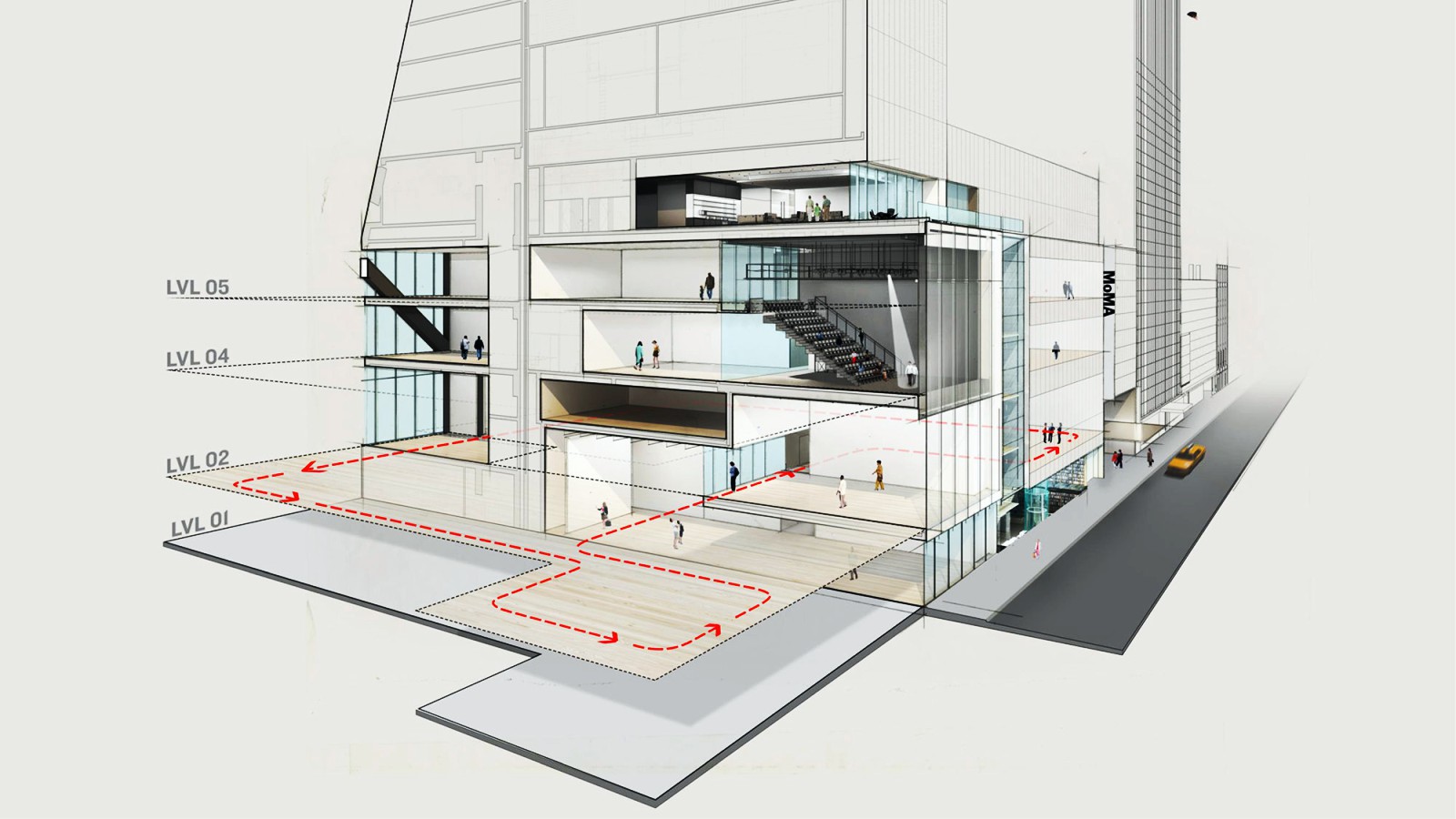Glenn D. Lowry, Director of The Museum of Modern Art, revealed the completed renovation of the east end of the Museum’s campus and unveiled the full design of a multi-year expansion project, developed by MoMA with architects Diller Scofidio + Renfro in collaboration with Gensler. The goals for the project are threefold: to increase gallery space and allow the Museum to exhibit significantly more of its diverse collection in deeper and more interdisciplinary ways, to provide visitors with a more welcoming and comfortable experience, and to better connect the Museum to the urban fabric of midtown Manhattan.
The renovation of the east section, which began in February 2016 and is now complete, enhances galleries and public spaces on three floors. This initial phase of the project includes the reconfiguration of 15,000 square feet to create two spacious galleries on the third floor that allow more flexibility for installing the collection and special exhibitions; the extension of the historic Bauhaus staircase to the ground level to restore and enhance access to the second-floor galleries; and the addition of a new first-floor lounge facing The Abby Aldrich Rockefeller Sculpture Garden.
Improvements also include renovations of the restrooms and the provision of an additional coat check at street level. On the second floor, Cafe 2 has been renovated, and is now adjacent to a new museum store and an espresso bar overlooking the Sculpture Garden. The overall expansion, including the west side that is now under construction, will yield a net increase in MoMA’s gallery space of one third, to 175,000 square feet. The design optimizes current spaces to be more flexible and technologically sophisticated, and creates more areas for visitors to pause and reflect.
It enlarges and opens up the main lobby into a light-filled, double-height space and creates intuitive circulation routes through the Museum, including a connector that seamlessly links the new galleries to the renovated east side of the building. Thanks to the redesigned circulation, the new western portion of the Museum will be dedicated almost entirely to the display of art. The 30 percent increase in exhibition space includes a stack of vertically interlocking galleries of varying heights, some naturally lit, some equipped for performance and film.
The more than 40,000 square feet of gallery space being added in the western portion of the building will enable MoMA to realize a long-held aspiration: to present significantly more of its collection through a series of fluid, interconnected narratives of modern and contemporary art across all mediums. The new galleries will provide an opportunity to reimagine the display of the Museum’s collection and showcase its depth, breadth, complexity, and diversity through a greater use of interdisciplinary installations, while also having rotating spaces devoted to specific mediums, including photography, architecture, and design.
The expansion to the west end of the site will feature engaging new street-level galleries comprised of a dedicated Projects Room and a gallery for contemporary design, a new fully customized studio space for media, performance, and film, and a sixth-floor lounge with an outdoor terrace facing 53rd Street. The MoMA Design and Book Store will be lowered one level and made visible to the street through a dramatic glass wall, and the building will be more open and directly woven into the fabric of midtown Manhattan. The entire first floor will continue to be open to the public free of charge, including the new galleries.
The existing galleries on the second, fourth, and fifth floors will be expanded westward through the new 53W53 building designed by Jean Nouvel, adding 11,500 square feet per floor. The main entrance of the original Goodwin and Stone building was located in what was known as the “Bauhaus Lobby,” the ground-floor space that has undergone many changes over the decades. The architects have reinstated the connection between the ground floor and the galleries with a stair that uses the original materials of terrazzo, glass, and steel, while structurally optimizing the design of the stair using advanced engineering capabilities.
The Grand Antique marble, sourced from the Ariège region in France, also recalls the marble surround of the historic stair in the Museum’s original lobby. Throughout the construction process, MoMA will remain open and continue to present its exhibition program. The main lobby entrance on 53rd Street will close as of June 4, 2017, to accommodate construction, and visitors will be directed a few hundred feet east to the lobby of the Ronald S. and Jo Carole Lauder Building, which was the original entrance to the Museum. Source and photos Courtesy of MOMA.










